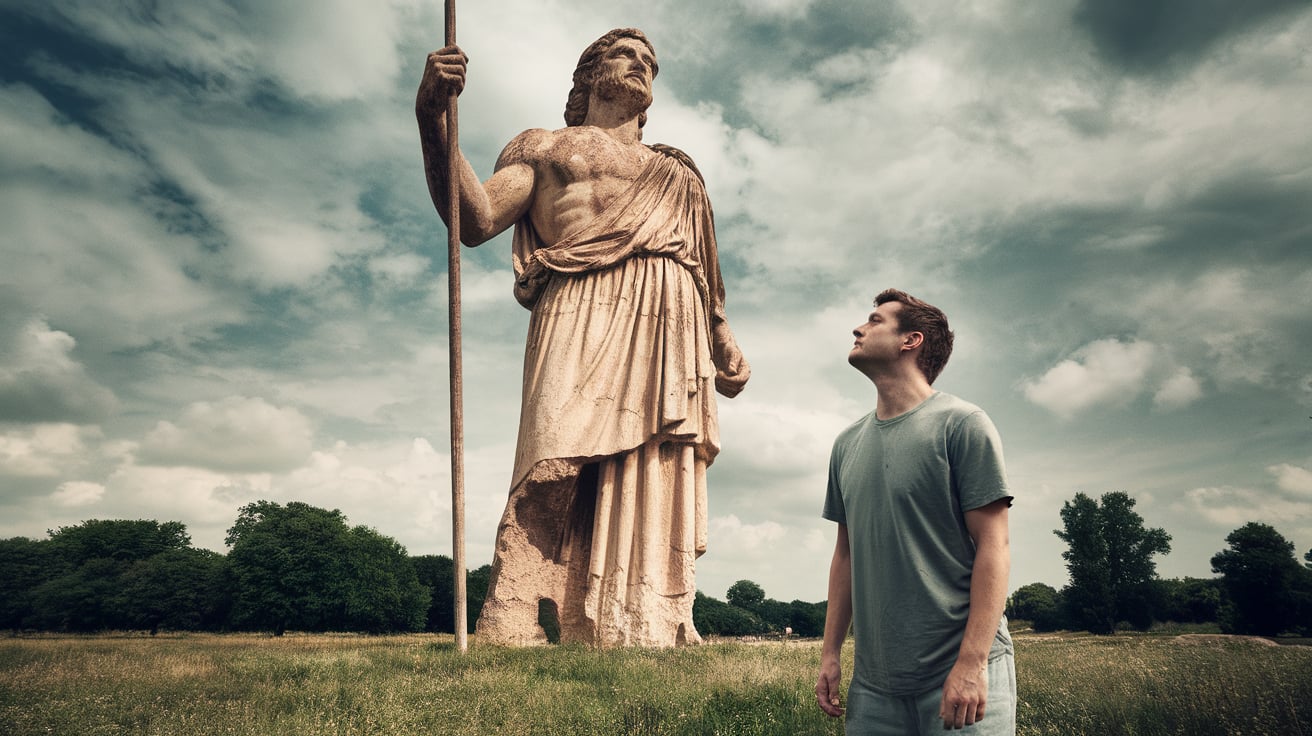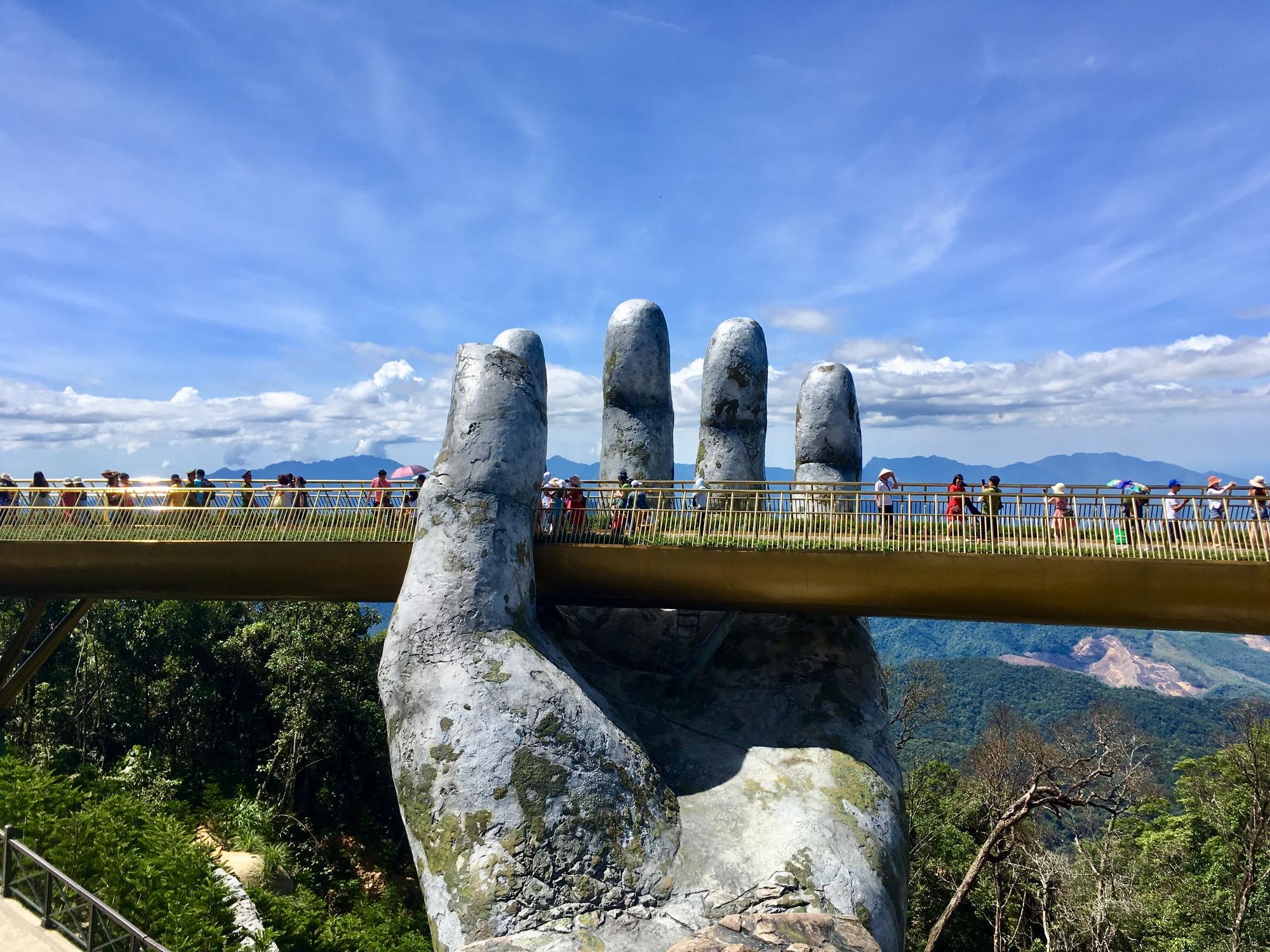
Most people react with amazement and wonder in a world filled with towering skyscrapers, massive monuments, and awe-inspiring natural wonders.
However, for individuals with megalophobia, these grand sights can trigger intense fear and anxiety.
Megalophobia is the irrational fear of large objects, such as buildings, statues, vehicles, and even large animals.
This phobia can significantly impact daily life, limiting one’s ability to travel, work in certain environments, or even enjoy common leisure activities.
Understanding megalophobia is crucial not only for those who experience it but also for their friends, family, and colleagues.
What is Megalophobia?

Megalophobia, derived from the Greek words “megalo” (large) and “phobos” (fear), is a specific phobia characterized by an intense, irrational fear of large objects.
Individuals with megalophobia often feel overwhelmed, anxious, or fearful when exposed to or even thinking about large objects.
The triggers for megalopolis can vary widely, including:
- Architectural marvels: Skyscrapers, bridges, or massive stadiums
- Large vehicles: Cruise ships, airplanes, or oversized trucks
- Natural formations: Mountains, cliffs, or giant redwood trees
- Artistic creations: Colossal sculptures or expansive murals
- Large animals: Whales, elephants, or dinosaur replicas
For someone with megalophobia, encountering these objects can lead to significant distress and a strong urge to avoid such situations.
The fear often extends beyond the physical presence of large objects, as even images or thoughts of them can trigger anxiety.
Symptoms of Megalophobia
Like many phobias, megalophobia manifests through a range of physical and psychological symptoms.
These can vary in intensity depending on the individual and the specific trigger.
Physical Symptoms:
- Rapid heartbeat or palpitations
- Sweating
- Trembling or shaking
- Shortness of breath or hyperventilation
- Dizziness or lightheadedness
- Nausea or stomach discomfort
- Chest pain or tightness
Psychological Symptoms:
- Intense fear or panic when exposed to large objects
- Anxiety or dread when anticipating encounters with large things
- Avoidance behavior towards places or situations where large objects might be present
- Feelings of helplessness or loss of control
- Difficulty concentrating when near large objects
- Intrusive thoughts about large things causing harm
Real-life scenarios illustrating these symptoms might include:
- A person experiencing a panic attack when entering a city with tall buildings
- Someone refusing to visit famous landmarks or monuments due to their size
- An individual feeling overwhelmed and dizzy when standing next to a large statue in a park
Common Triggers of Megalophobia
A wide array of large objects, both natural and man-made, can trigger Megalophobia. Common triggers include:
- Architectural Structures: Skyscrapers and tall buildings, massive bridges or dams, large stadiums or arenas
- Vehicles and Machinery: Cruise ships or oil tankers, jumbo jets or cargo planes, large construction equipment like cranes or excavators
- Natural Formations: Mountains or cliffs, giant waterfalls, enormous trees like sequoias or redwoods
- Art and Statues: Colossal sculptures like the Statue of Liberty, large murals or paintings, and oversized installations in modern art museums
- Large Animals: Whales or sharks, elephants or giraffes, dinosaur replicas in museums
The severity of the reaction can depend on factors such as the size of the object, its proximity, and the individual’s personal experiences and perceptions.
Causes of Megalophobia
The development of megalophobia, like many phobias, is often multifaceted. Several factors can contribute to its onset:
- Genetic Factors: Research suggests that there may be a genetic component to phobias, including megalophobia. Individuals with a family history of anxiety disorders or specific phobias may be more susceptible to developing megalophobia.
- Past Traumatic Experiences: A negative encounter with a large object during childhood or a traumatic event involving something large (like being trapped in a tall building during an emergency) can trigger the development of megalophobia.
- Evolutionary Perspective: Some researchers propose that fear of large objects might have roots in our evolutionary past. Our ancestors may have developed a cautious response to large entities as a survival mechanism, which could manifest as megalophobia in some individuals today.
- Cultural and Social Influences: Media portrayals, such as movies featuring giant monsters or news reports about accidents involving large structures, can develop fear towards large objects.
- Learned Behavior: Children who observe parents or caregivers expressing fear or anxiety around large objects may internalize these reactions and develop megalophobia.
- Cognitive Factors: Some individuals may develop megalophobia due to distorted thought patterns or overestimation of the danger posed by large objects.
How Megalophobia Affects Daily Life

Megalophobia can significantly impact various aspects of an individual’s daily life, often leading to limitations and challenges:
- Travel Restrictions: Avoiding air travel due to fear of large airplanes or reluctance to visit cities with tall buildings or famous large landmarks
- Career Limitations: Difficulty working in fields like construction, architecture, or transportation, or avoidance of job opportunities in tall office buildings
- Social and Recreational Impacts: Avoiding social gatherings in large venues or spacious rooms, limitations on outdoor activities, especially in areas with mountains or large natural formations
- Educational Challenges: Difficulty attending classes or events in large auditoriums or campus buildings, avoidance of field trips to museums with large exhibits or natural history displays
- Daily Navigation Issues: Choosing longer routes to avoid bridges or tunnels, difficulty using public transportation like buses or trains
- Emotional and Psychological Strain: Constant anxiety when living in urban environments, feelings of isolation or inadequacy due to limitations imposed by the phobia
These impacts can reduce quality of life, affecting personal relationships, career progression, and overall well-being.
Diagnosing Megalophobia
The diagnosis of megalophobia typically involves a comprehensive evaluation by a mental health professional, such as a psychologist or psychiatrist. The diagnostic process may include:
- Clinical Interview: Detailed discussion of symptoms, their duration, and impact on daily life, exploration of personal and family history of phobias or anxiety disorders
- Behavioral Observation: Assessing the individual’s reaction to images or videos of large objects, in some cases, observing reactions to actual large objects in a controlled environment
- Diagnostic Criteria: Using criteria from the Diagnostic and Statistical Manual of Mental Disorders (DSM-5). Key criteria include persistent, excessive fear triggered by large objects, immediate anxiety response upon exposure, recognition that the fear is disproportionate, avoidance of large objects or enduring them with intense anxiety, symptoms lasting for at least six months, and significant impairment in daily functioning.
- Differential Diagnosis: Ruling out other conditions that might explain the symptoms, such as generalized anxiety disorder or other specific phobias
- Assessment Tools: Use of standardized questionnaires or rating scales to measure anxiety levels and phobia severity
It’s important to note that self-diagnosis is not recommended. If you suspect you might have megalophobia, consulting with a mental health professional is crucial for an accurate diagnosis and appropriate treatment plan.
Treatment Options for Megalophobia
Fortunately, like many phobias, megalophobia is treatable. A combination of therapeutic approaches and, in some cases, medication can help individuals manage and overcome their fear of large objects. Here are some common treatment options:
- Cognitive Behavioral Therapy (CBT): CBT is often the first-line treatment for phobias, including megalophobia. This approach involves identifying and challenging negative thought patterns about large objects, learning to replace irrational thoughts with more realistic ones, developing coping strategies to manage anxiety symptoms, and gradual exposure to feared objects in a controlled, supportive environment.
- Exposure Therapy: This specific form of CBT involves systematic, controlled exposure to large objects. The process typically includes creating a hierarchy of feared situations, gradually exposing the individual to these situations, using relaxation techniques during exposure to manage anxiety, and progressing to more challenging situations as comfort levels increase.
- Virtual Reality Therapy: With technological advancements, virtual reality (VR) is becoming an increasingly popular tool in treating phobias. For megalopolis, VR can simulate encounters with large objects in a safe, controlled environment, allow for a gradual increase in the intensity of exposure, and provide a bridge between imaginal exposure and real-life encounters.
- Medications: In some cases, especially when anxiety symptoms are severe, medications may be prescribed alongside therapy. These can include anti-anxiety medications for short-term relief of acute symptoms or antidepressants for long-term management of anxiety and related symptoms.
- Relaxation Techniques: These can be taught as part of therapy or practiced independently, including deep breathing exercises, progressive muscle relaxation, mindfulness meditation, and visualization techniques.
- Group Therapy: Participating in group therapy sessions with others who have similar phobias can provide a supportive environment for sharing experiences, offer opportunities to learn from others’ coping strategies, and reduce feelings of isolation or shame associated with the phobia.
The most effective treatment plan often involves a combination of these approaches tailored to the individual’s specific needs and preferences.
Working with a mental health professional to develop a personalized treatment strategy is essential.
Coping Strategies for Managing Megalophobia
In addition to professional treatment, there are several coping strategies that individuals with megalophobia can employ to manage their fear in daily life:
- Identify and Challenge Negative Thoughts: Practice recognizing when you’re having irrational thoughts about large objects, use logical reasoning to assess the actual threat level, keep a thought journal to track and analyze your fear responses
- Gradual Exposure: Start with small steps, like looking at pictures of large objects, progress to watching videos or virtual reality simulations, and gradually work up to real-life encounters with large objects
- Create a Support Network: Share your fears with trusted friends and family, ask for support during exposure situations, and consider joining a support group for individuals with phobias.
- Practice Relaxation Techniques: Learn and regularly practice deep breathing exercises, use progressive muscle relaxation to reduce physical tension, explore mindfulness meditation to stay grounded in the present moment
- Educate Yourself: Learn about the construction and safety features of large structures, understand the rarity of accidents involving large objects, use knowledge to counter irrational fears.
- Visualization Exercises: Practice imagining yourself calmly encountering large objects, visualize successfully managing your anxiety in triggering situations
- Develop a Personal Mantra: Create a short, positive phrase to repeat during anxious moments, such as “I am safe. This object cannot harm me.”
- Focus on Positive Experiences: Celebrate small victories in managing your fear, keep a record of successful encounters with large objects.
- Maintain Overall Well-being: Engage in regular exercise to reduce general anxiety levels, ensure adequate sleep and a balanced diet, and limit caffeine and alcohol, which can exacerbate anxiety symptoms.
- Use Distraction Techniques: Employ counting exercises or mental games when near large objects, and listen to calming music or podcasts during unavoidable exposures.
Remember, progress may be gradual, and setbacks are normal. Be patient and kind to yourself as you work on managing your fear.
Supporting Someone with Megalophobia
If you have a friend or family member with megalophobia, your support can be invaluable in their journey to manage their fear. Here are some ways you can help:
- Educate Yourself: Learn about megalophobia to understand better what your loved one is experiencing, recognize common triggers and symptoms
- Be Patient and Understanding: Avoid dismissing or minimizing their fear; understand that overcoming a phobia takes time and effort.
- Offer Emotional Support: Listen without judgment when they want to talk about their fears, validate their feelings, and encourage progress.
- Avoid Forced Exposure: Don’t pressure them into situations involving large objects before they’re ready; respect their boundaries and comfort levels.
- Encourage Professional Help: Suggest seeking support from a mental health professional, offering to help find a therapist, or accompanying them to appointments if desired.
- Be a Supportive Presence During Exposure: If they’re working on exposure therapy, offer to accompany them for moral support and celebrate their progress, no matter how small it may seem.
- Help Create a Safe Environment: Help make their living or working space feel safe and comfortable, and be mindful of potential triggers in shared spaces.
- Learn Relaxation Techniques Together: Practice deep breathing or other relaxation exercises with them; this can be supportive and beneficial for stress management.
- Provide Practical Assistance: Offer help with tasks that might involve encounters with large objects, and be willing to make accommodations in shared activities or travel plans.
- Maintain Your Own Boundaries: While being supportive, avoid enabling avoidance behaviors, take care of your mental health, and seek support if needed.
Remember, your role is to support, not to cure. Encourage professional help for the most effective treatment of megalophobia.
Conclusion
Megalophobia, the fear of large objects, is a complex and misunderstood condition that can significantly impact an individual’s daily life.
From avoiding city centers to experiencing panic attacks near large structures, the effects of this phobia can be far-reaching and debilitating.
However, it’s crucial to remember that megalophobia, like other phobias, is treatable.
With the right combination of professional help, support from loved ones, and personal coping strategies, individuals with megalophobia can learn to manage their fear and even overcome it.
The journey may be challenging, but each step towards facing large objects represents a victory.
Whether you’re struggling with megalophobia yourself or supporting someone who is, remember that help is available, and a life less constrained by this fear is possible.

